The past month has been unusually difficult for crypto markets. Nearly all major assets have traded lower following the record liquidation event of October 11, which triggered a broad risk-off phase across the sector. Bitcoin has continued to slide since, pulling most correlated tokens down with it.
Yet in the same period, some assets have behaved differently. While the broader market moved as a single macro-driven block, a few tokens showed price dynamics that didn’t fit the usual pattern. One of the most notable examples comes from football, specifically, from the Arsenal Fan Token ($AFC). That divergence raises an interesting question: what drives Fan Token valuations when the rest of crypto is falling?
Fan Tokens Decouple From the Crypto Market
The past month has been challenging for crypto markets, with almost every major asset trading in negative territory. The downturn began on October 11, when the largest crypto liquidation event on record erased more than $20 billion in open interest immediately after the U.S. announced a tariff hike on China. The shock accelerated selling across the market and triggered a sustained decline: since that point, Bitcoin has fallen a further ~15%, dragging down the majority of tokens that remain closely correlated to it.
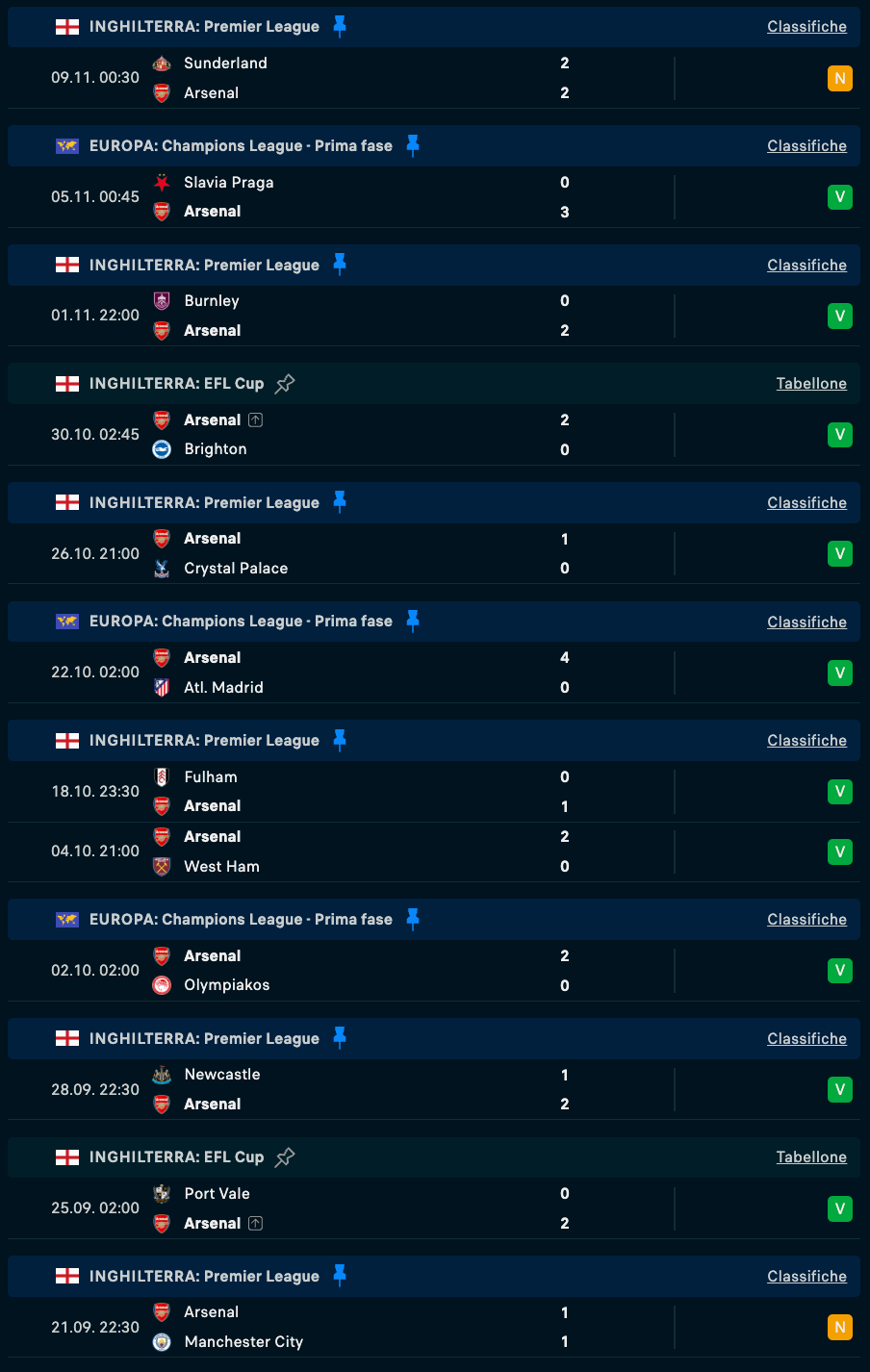
Source: TradingView
However, not all tokens respond to market conditions in the same way. Fan Tokens exhibit behaviours that set them apart from typical crypto assets. Their price action is heavily influenced by major football events and periods of high engagement, often causing them to decouple from Bitcoin and the broader market cycle. When anticipation and excitement build around a club’s performance, Fan Tokens tend to move according to sporting momentum rather than macro sentiment.
A clear example is the Arsenal Fan Token ($AFC). From the market bottom on October 11, $AFC sharply diverged from crypto benchmarks, outperforming $BTC, $CHZ, and $TOTAL3 (total crypto market cap excluding $BTC and $ETH). Over just slightly more than a month, $AFC gained over 30%. For comparison, $CHZ, the broad benchmark for Fan Tokens, increased nearly 19%, already strong relative to the market backdrop. Meanwhile, $TOTAL3 and $BTC declined by -2.4% and -7.6% over the same period.

Source: TradingView
Arsenal Case Study: Sporting Momentum as a Pricing Catalyst
The clearest driver behind this decorrelation was Arsenal’s extended run of 10 consecutive victories across the Premier League and Champions League between September 25 and November 11.
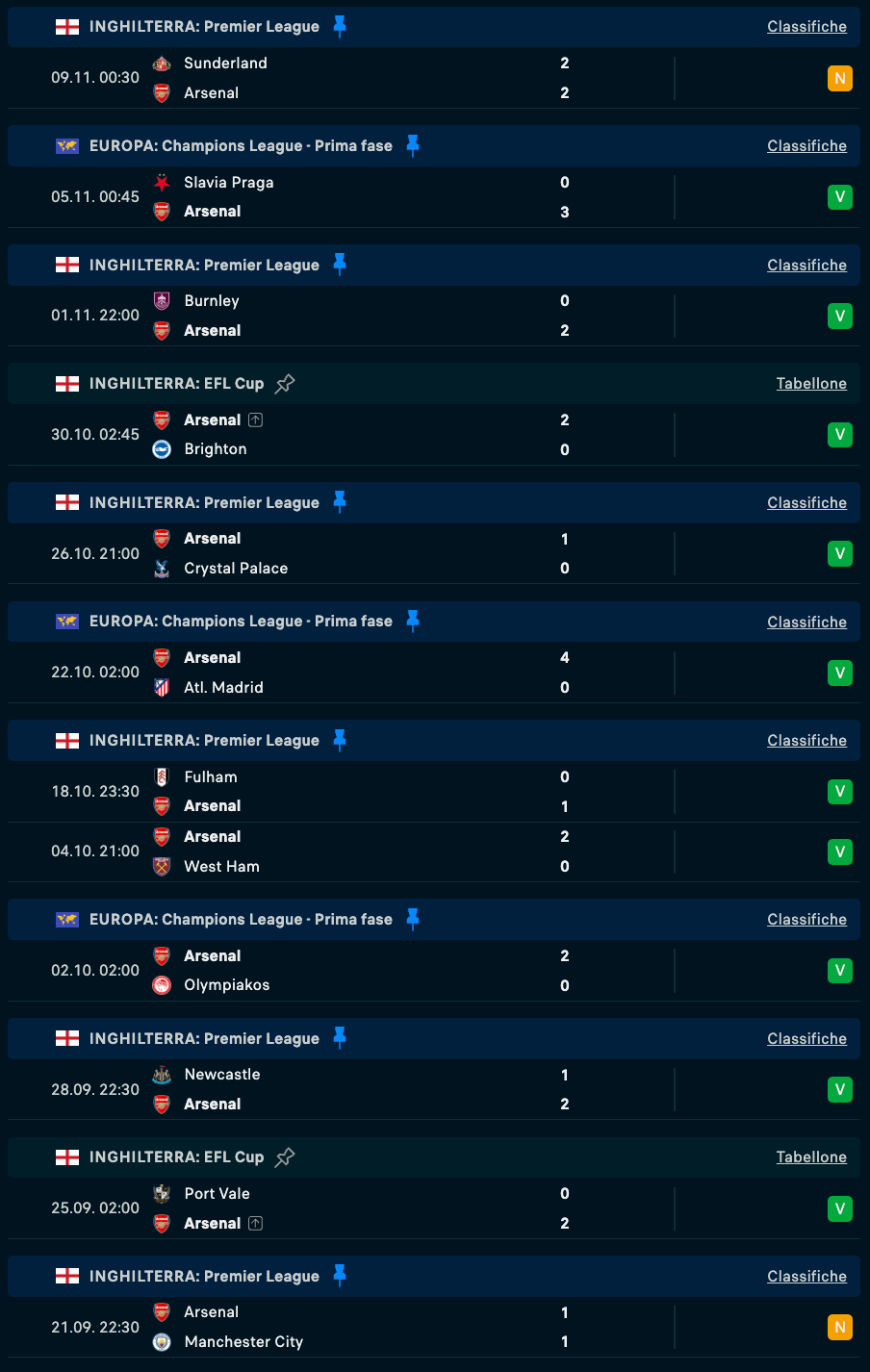
Source: Diretta.it
As illustrated in the match sequence chart, each numbered point corresponds to one of those wins. After the October 10 crypto crash, the winning streak became the dominant catalyst shaping $AFC price action. Rising confidence among fans, combined with traders positioning around the possibility of yet another win, likely sustained continuous buy pressure. This dynamic pushed $AFC not only to recover its losses from the broader market sell-off but to move decisively higher in the weeks that followed.
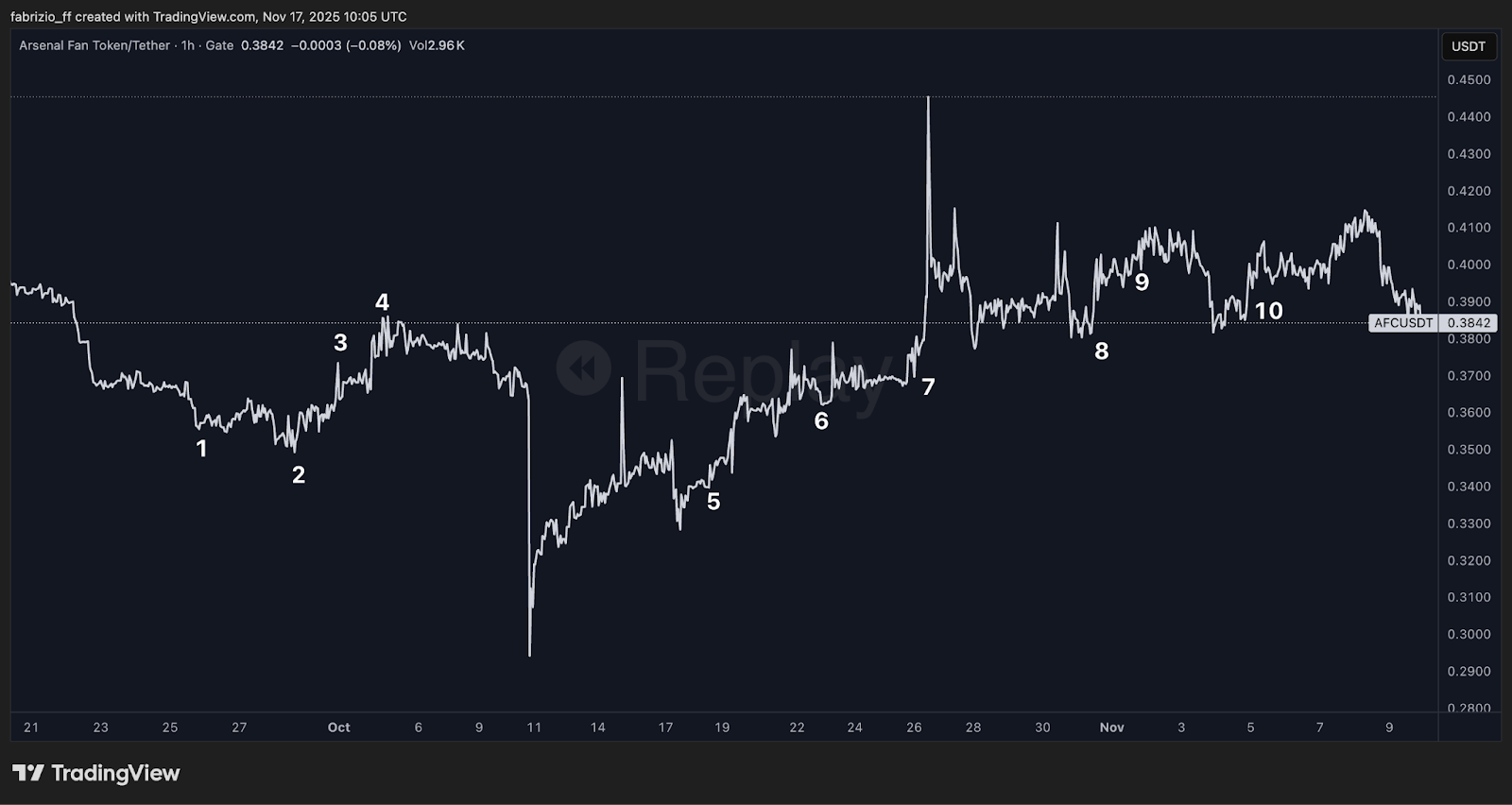
Source: TradingView.
Arsenal’s case is not an anomaly. Similar price behaviours have appeared across other major Fan Tokens when clubs entered high-stakes phases of competition.
A clear example is Tottenham’s run in the Europa League 2025. After the club secured victory in the quarter-final and expectations of reaching the final increased, $SPURS began to reprice sharply higher. Over the following month, the token fully decoupled from broader crypto trends, with its correlation to Bitcoin dropping rapidly. At its peak, $SPURS gained +83% compared to Bitcoin’s +13%, a significant relative outperformance driven almost entirely by football-specific catalysts rather than market conditions.
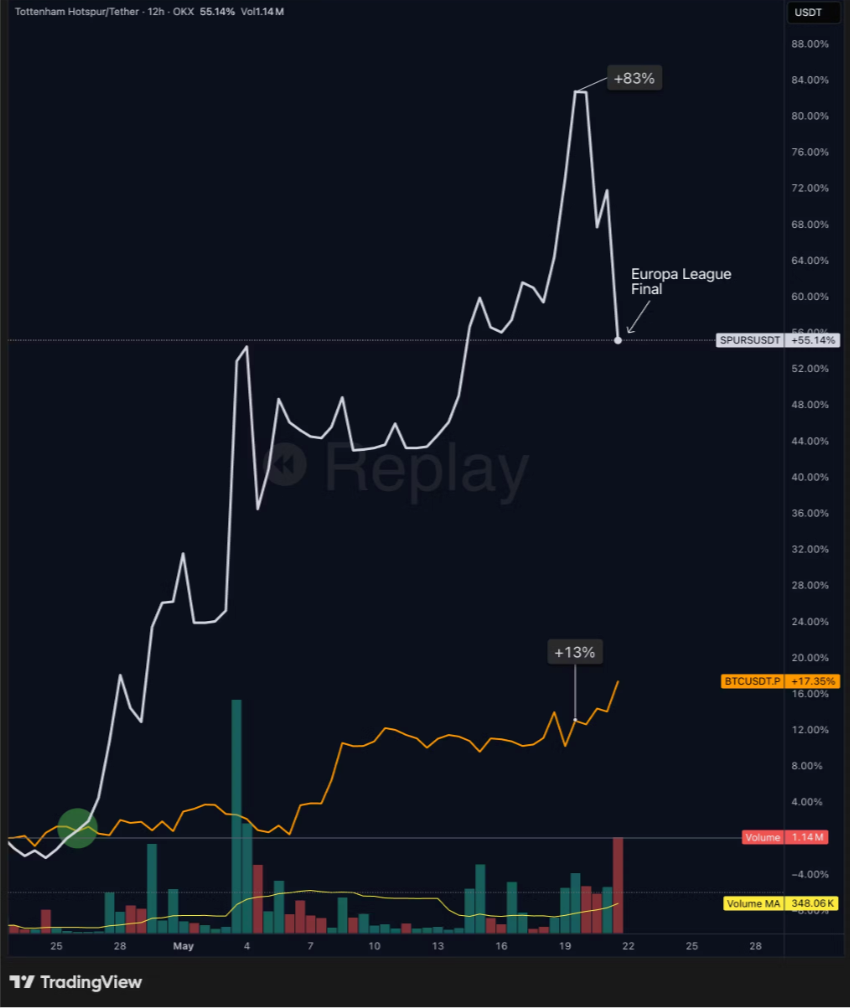
Source: TradingView
A similar pattern emerged with Paris Saint-Germain during the Champions League 2025 campaign. After PSG advanced to the semi-finals and the probability of reaching the final increased, $PSG repriced meaningfully higher. Like Tottenham, the token broke correlation with Bitcoin and the broader market, showing independent behaviour. At its peak, $PSG reached +40% against Bitcoin’s +17%, again reflecting sentiment tied to football performance rather than crypto beta.
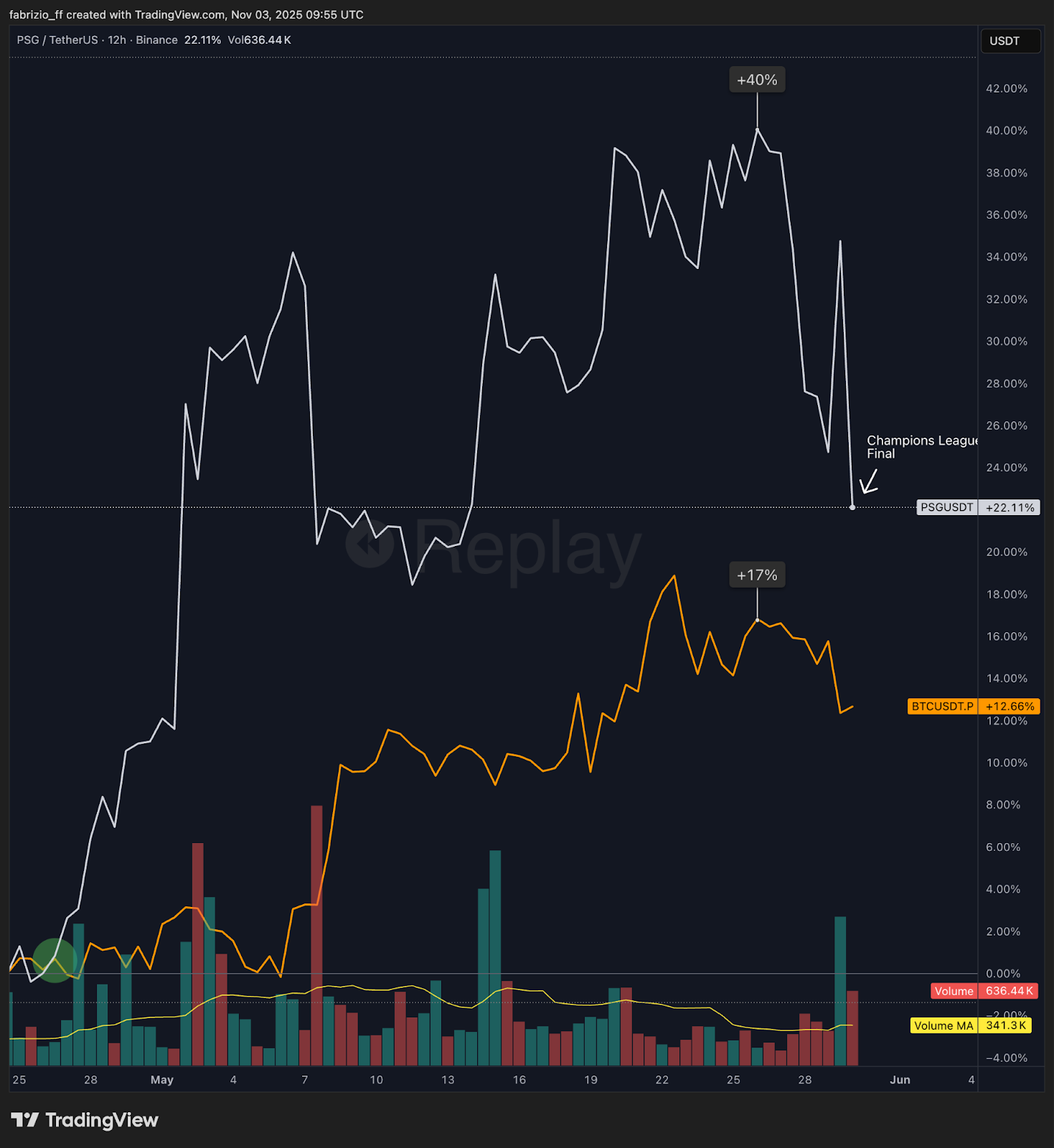
Source: TradingView
These cases highlight a fundamental characteristic of Fan Tokens: their performance is directly linked to sporting momentum, expectations, and tournament stakes. As confidence around a club rises, traders increasingly treat Fan Tokens as a way to express expectations about future results. In practice, this makes them function as an alternative to binary prediction markets such as Polymarket or Kalshi, and as a more transparent, continuous alternative to traditional sportsbook markets, where odds are centrally controlled.
Fan Tokens as Prediction Assets
Unlike a sportsbook bet that locks users into a single outcome, Fan Tokens operate in a 24/7, liquid market where positions can be opened, closed, or scaled at any time. Investors are not betting on a single result, they are trading on momentum, probability, and belief. This shifts speculation from a one-off wager to an ongoing market-priced forecast.
Fan Tokens can also be used alongside prediction markets to exploit inefficiencies across related markets when expectations diverge. For example, if a club’s Fan Token begins pricing in higher confidence before odds adjust on a prediction platform, traders can act on that mismatch.
The rapid growth of on-chain prediction markets reinforces this dynamic. As more users become accustomed to speculating on sports outcomes, especially through platforms like Polymarket, that behaviour naturally extends to Fan Tokens, increasing liquidity, visibility, and demand across both ecosystems.

Source: Google Trends. Term: Polymarket.
A concrete way to observe the connection between Fan Tokens and prediction dynamics is by looking at the “English Premier League Winner” market on Polymarket, which settles in May 2026. Before October 2025, Manchester City was slightly favoured over Arsenal. However, as Arsenal entered its winning streak, the market rapidly repriced expectations: Arsenal’s implied probability rose from roughly 35% to 55%, while Manchester City dropped from around 45% to 30%.
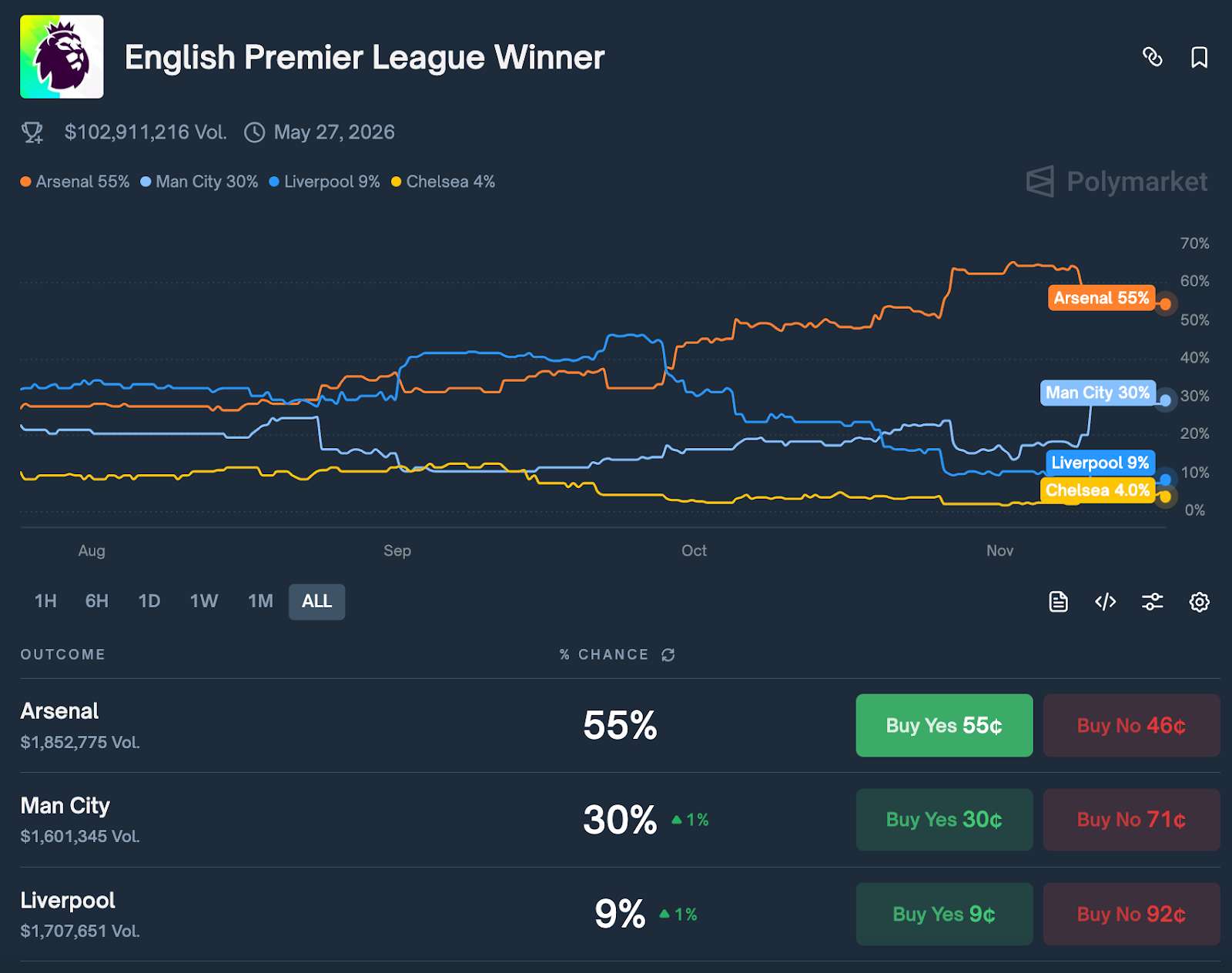
Source: Polymarket
A similar repricing occurred in the Fan Token market over the same period. While Arsenal was outperforming on the pitch, $AFC appreciated more than 30%, whereas $CITY declined by over 5% across the same timeframe.
This divergence created two distinct trading approaches. A trader expecting Arsenal’s strong form to continue could simply take a directional position by going long $AFC. However, a more risk-controlled approach would be to trade the relative performance between the two clubs, going long $AFC and short $CITY. In that case, the bet is not on the absolute movement of the token, but on Arsenal outperforming Manchester City on the field, with the market continuously adjusting that expectation in real time. This is also a key difference between Fan Tokens and traditional betting: investors can hedge, neutralise wider market volatility, and express views on sporting momentum rather than binary outcomes.
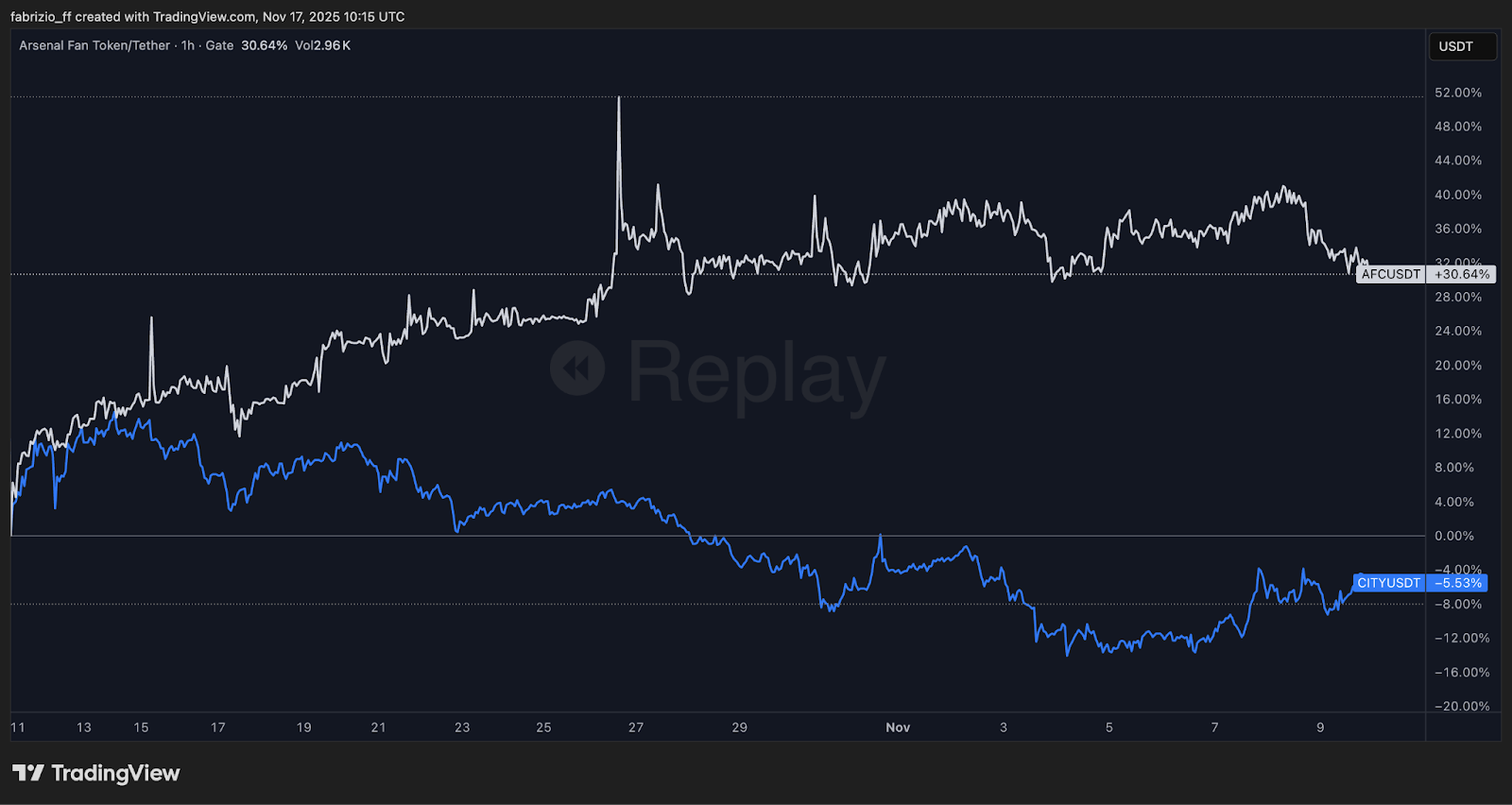
Source: TradingView
The parallel movements across both markets, prediction platforms and Fan Tokens, send a consistent signal: Fan Tokens are highly sensitive to sporting performance and collective belief around future outcomes. As confidence grows or fades, Fan Token prices adjust in real time, allowing traders to gain or reduce exposure to a club’s trajectory rather than to the broader crypto market.
Conclusion
The recent performance of $AFC, and similar patterns observed across $SPURS and $PSG, shows that while Fan Tokens remain broadly correlated to the wider crypto market, they possess unique dynamics that can override that correlation during key sporting moments. Their pricing is still influenced by macro trends, but real-world outcomes, momentum, and fan expectations can trigger periods of decorrelation and independent price discovery. When anticipation builds around a club’s trajectory, Fan Tokens reflect that belief in real time, often regardless of market-wide sentiment. For traders and fans alike, these assets provide a liquid, transparent and continuous way to take a view on sporting outcomes rather than macro conditions.
As the prediction-asset narrative gains traction across crypto and on-chain prediction markets attract growing participation, Fan Tokens naturally sit at the intersection of these two trends. Their value does not depend on isolated event settlements, but on the dynamic repricing of probabilities as a season unfolds. If current behavioural patterns continue, Fan Tokens may emerge as one of the clearest real-world demonstrations of markets pricing expectations, and one of the most accessible on-chain entry points for speculating on sport.
FanTokens | Link
Polymarket | Link
Kalshi | Link

